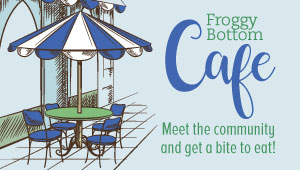If you missed this story in yesterday’s Washington Post, it’s worth violating your Newstrike! resolution to go see. It’s about the Whitney Biennial, and while I’m certainly not one known around these parts for blogging about the fine arts, in this case I’ll make an exception:
Every two years, New York’s Whitney Museum of American Art presents the Whitney Biennial, a selective exhibition that showcases cutting-edge American contemporary art. This year’s exhibit, titled “Day for Night,” paints a grim picture of the complicated global landscape. [oh how tactfully, how ambiguously put, mon ami…]
Grim is putting it mildly, and if you check out the slide show and the story, you’ll see who in particular they’ve got an issue with (as if you couldn’t guess).
Here’s a clue: “This biennial shows blue-staters feeling so blue they’re close to tearing out their hair.”
The featured works include:
- a messy crayon image of the most famous victim of Abu Ghraib, up there on his crate with hood and electrodes. The words “STOP BUSH” are scrawled above him, and viewers are invited to take a photocopy of the work..
- a head-high tangle of bent aluminum tubes with each stick of metal sheathed in a scrap of red, white and blue bunting — the piece is titled “RWBs” — so that the overall effect is of some Fourth of July cataclysm. It’s not even as elegiac as that: It comes closer to suggesting that the very notion of American patriotism has become hopelessly tangled and torn [my thought was “frayed”].
- a homemade tanning bed that burns the Stars and Stripes onto its naked user’s skin.
- a five-minute trailer for an imaginary Hollywood blockbuster to be called “Caligula.”
- documentary footage of a long-standing Christmas tradition said to be peculiar to one part of rural Austria. It shows a man dressed as a generous Saint Nicholas distributing gifts, followed by four horned and hairy devils, with clanging cowbells on their belts, who terrorize and rough up any revelers they find. On what ought to be a happy yuletide night, little girls dissolve into tears and young men are left groaning in the snow.
- a straight-ahead slide show of Philadelphia’s ghettos and of Hurricane Katrina’s wake.
- wall-size figurative watercolors — blurred in appealing shades of gray — that in fact depict extremes of sadomasochistic bondage, with rubber-wrapped figures suspended from ropes and chains.
- an attractive landscape vista reworked in Photoshop so that every trace of foliage becomes a deep blood red.
- a photo of all-American dad tiding up his son for church, which takes on sinister, oppressive tones [you have to see it to get it].
- the torso of a tuxedoed man using American Sign Language to convey — in eerie silence — the final, impassioned speech from Charlie Chaplin’s “The Great Dictator,” which was the brilliant comic’s first talkie and last great movie.
- sparkling store vitrines that house a deluxe perfume bottle labeled “Ne Travaillez Jamais” (“Never Work”) as well as a glamorous jewelry ad onto which she has collaged an image of political graffiti that reads, “AMERICA 1492 IRAQ 2003.”
Grim – gloomy – cynicism – the article points out such emotions are normal at the Whitney show. But there’s something else among some artists as well: a nihilism that’s so world-weary that any serious acting out — including any art — is almost too much for it. But the reviewer for the Post, like posters here, is not without hope:
You wouldn’t want to condemn such a dour view of the world, or of art. When it comes to the world, it’s easy to imagine a much improved version, but it’s depressingly hard to know how or if we’ll ever get there. In the case of art, things may look even worse: You can believe in the exhaustion of most of what is going on right now and still not have a single clue as to what a better future might be like.
But that something strong and fresh will come along seems almost certain. For 500 years, through troughs at least as deep as ours, art has always come through. And there are hints, at least, in some works in this biennial and others beyond it, that it’s still got the strength to renew itself.
And the review ends with a final, telling comment:
The 2006 Whitney Biennial is the first to bear a title: “Day for Night,” after the Hollywood trick for shooting night scenes in daytime, as well as for the famous Francois Truffaut movie of the same name — whose original French title was “La Nuit Americaine” (“American Night”).
Noir indeed.
Fin.




